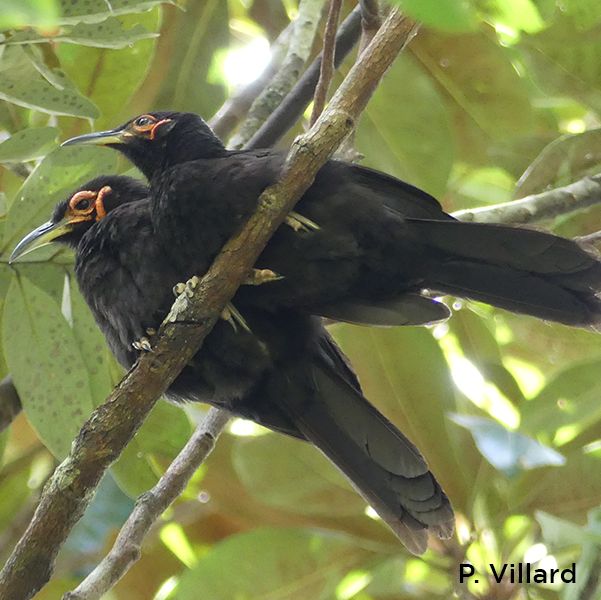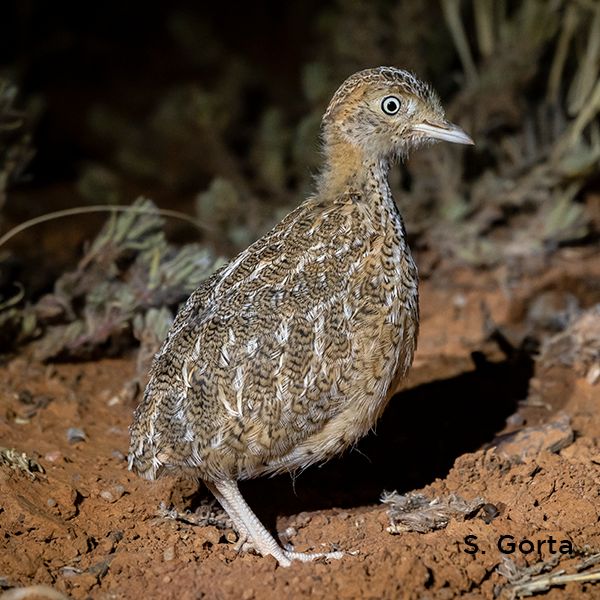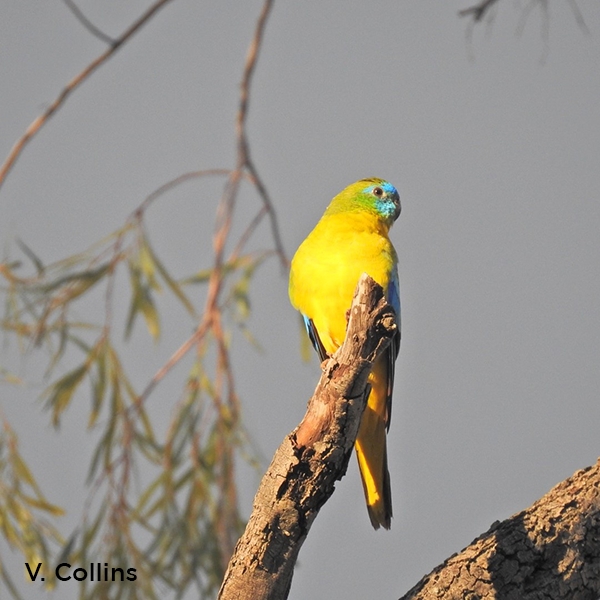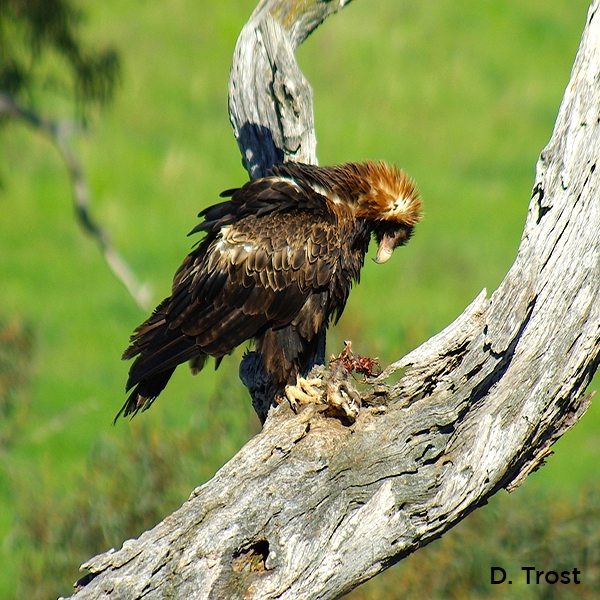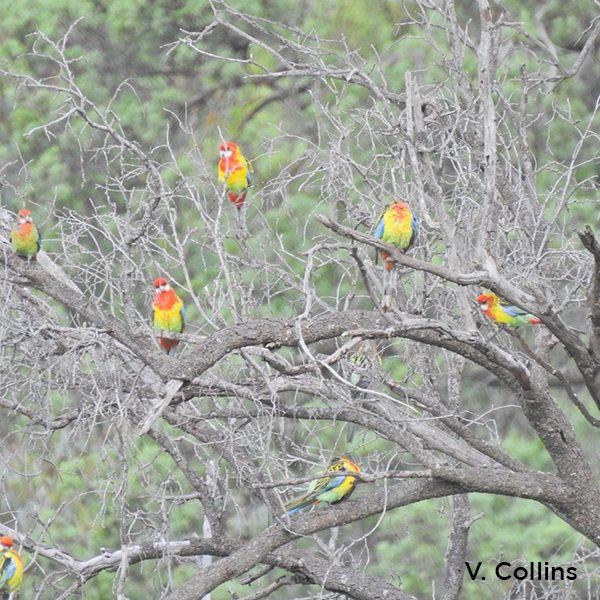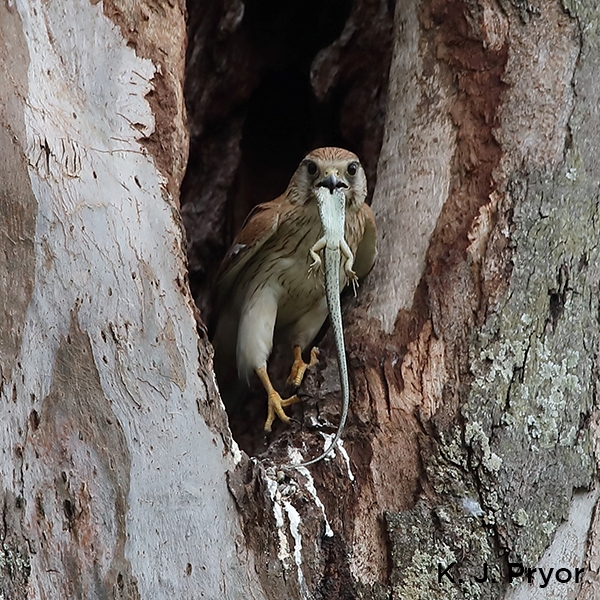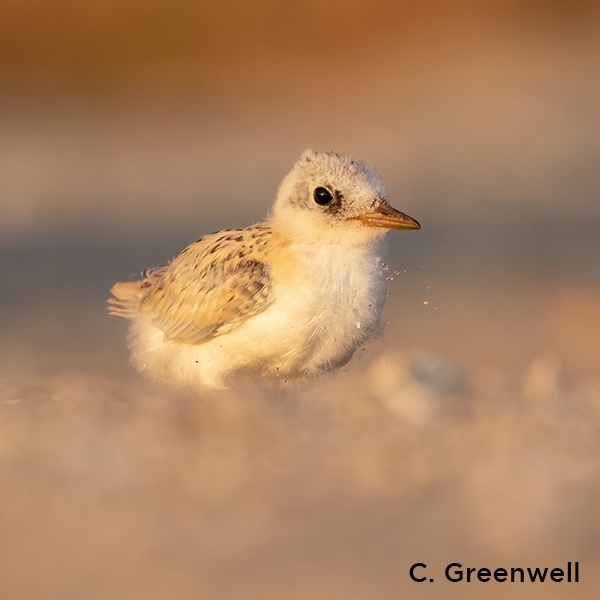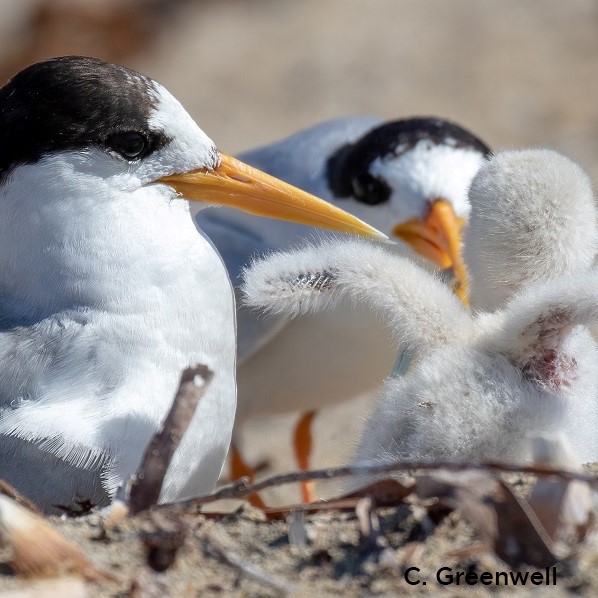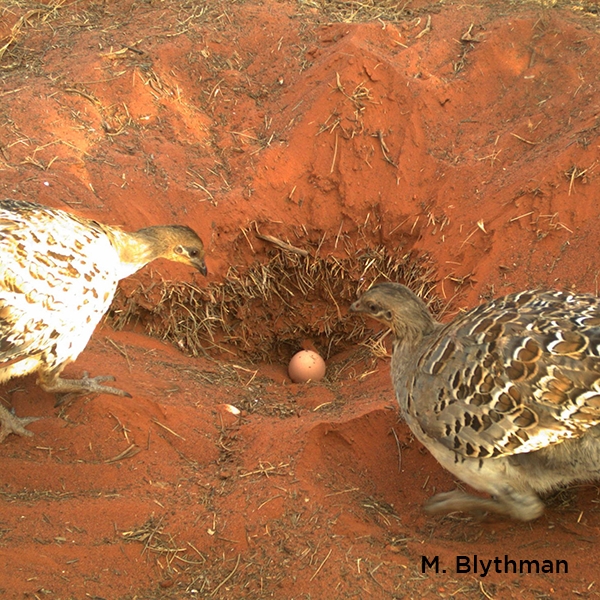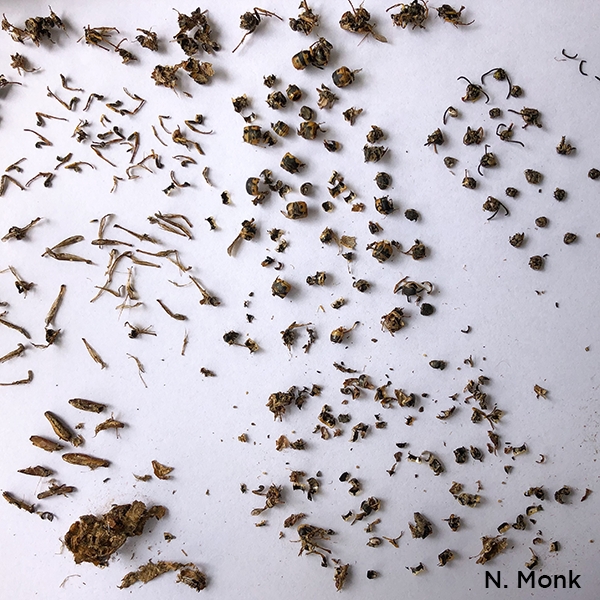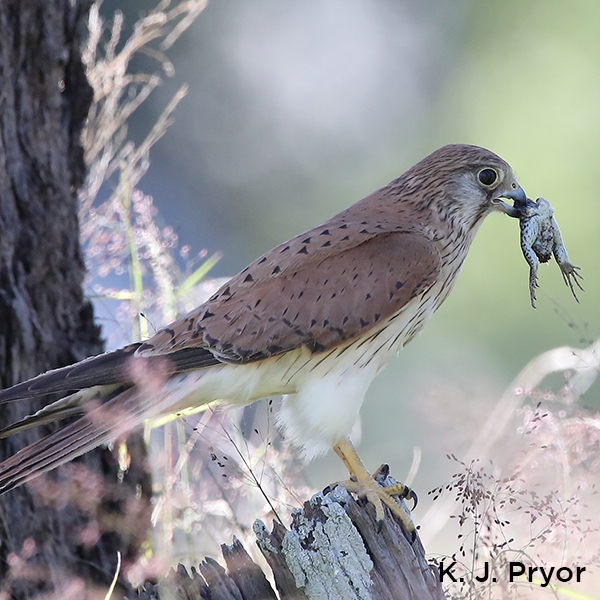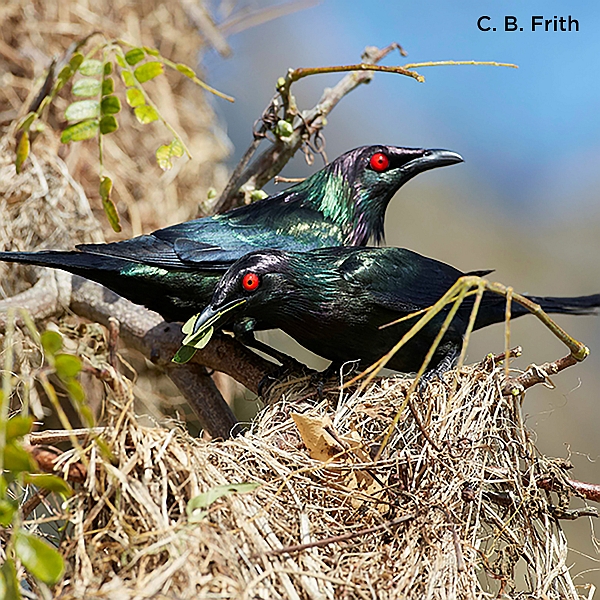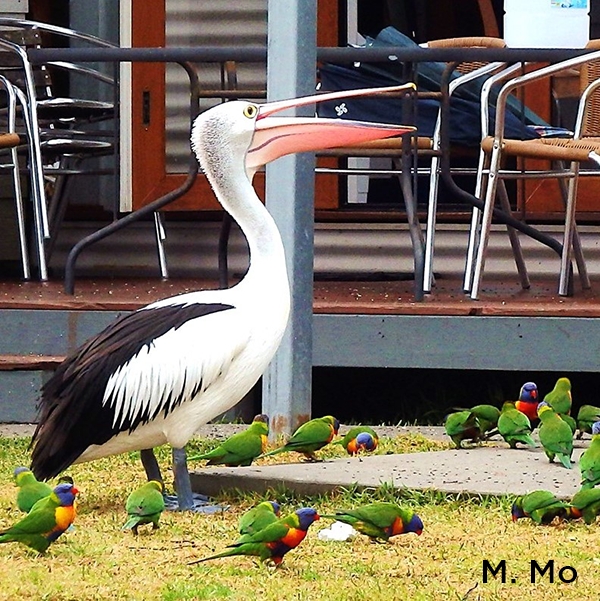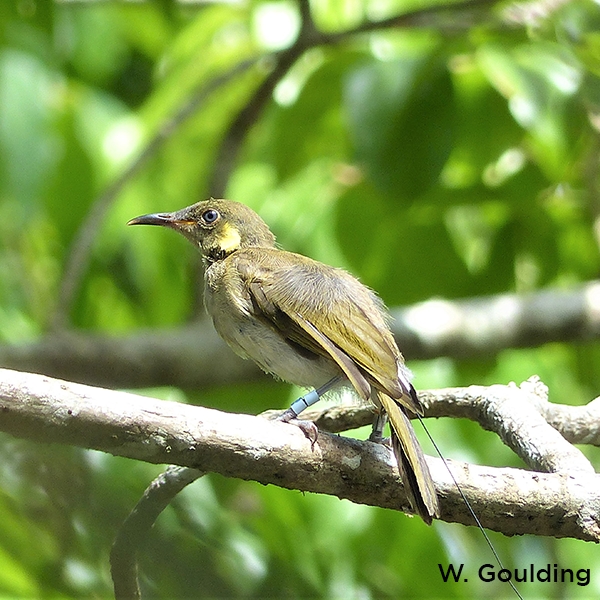Observations on the Biology of the Powerful Owl Ninox strenua in Southern Victoria
E G McNabb
P. 267-295
Abstract
A pair of Powerful Owls Ninox strenua was studied at each of two sites near Melbourne, Victoria, for three years (1977-1979) and 15 years (1980-1994 inclusive) respectively, by diurnal and nocturnal observation. Home ranges were.mapped, nest sites characterised and breeding chronology and success monitored. General observations at these and eight other sites, of roosting, courting, nesting, parental and juvenile behaviour, fledgling mortality, hunting, interspecific conflicts, bathing, and camouflage posing, are presented.
The regularly used parts of the home ranges of two pairs were each estimated as c. 300 ha, although for one pair this applied only to the breeding season. One pair used seven nest trees in 15 years, commonly two or three times each (range 1-4 times) over consecutive years before changing trees. Nest-switching may have been encouraged by human inspection of hollows. Nest entrances were 8-40 m (mean 22 m) above ground. The owls clearly preferred the larger and older trees (estimated 350-500+ years old), beside permanent creeks rather than seasonal streams, and in gullies or on sheltered aspects rather than ridges. Laying dates were spread over a month from late May, with a peak in mid June. The breeding cycle occupied three months from laying to fledging, of which the nestling period lasted 8-9 weeks. Breeding success was 1.4 young per pair per year and 94% nest success; early nests in gullies were more successful than late nests on slopes. The post-fledging dependence period lasted 6-7 months from fledging. The diet consisted mostly of possums and gliders, primarily the Common Ringtail Possum Pseudocheirus peregrinus (78-89% by number). A resident breeding pair of owls took at least 95 major prey items in 368 days.

